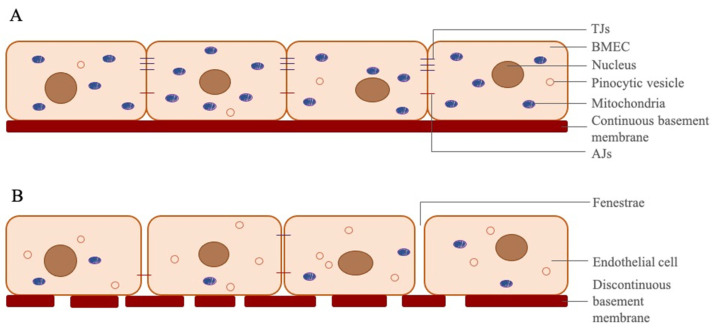Figure 1.
Differences between BMECs and peripheral endothelial cells. (A) BMECs line along a continuous basement membrane in cerebral capillaries. These cells have tight and adherens junctions to prevent paracellular transition of the molecules in bloodstream. BMECs have 5–6 times more mitochondria than peripheral endothelial cells, due to which transition of the molecules occurs mostly transcellularly in cerebral microvascular capillaries, and BMECs need more ATP than other endothelial cells. They have less pinocytic vesicles than peripheral endothelial cells to reduce transport of unwanted molecules via pinocytosis. (B) Peripheral endothelial cells, which have fenestrae, more pinocytic vesicles and less mitochondria, line along a discontinuous basement membrane in peripheral capillaries. These cells have fewer TJs and AJs, and sometimes have wide intracellular gaps to allow transition of molecules via diffusion.

